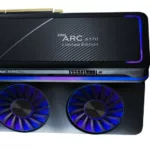ThinkPad is almost the polar opposite of Apple in that ThinkPad is function over form while Apple tends to be form over function. You buy Apple for the look of the device and to feel part of the Apple cult, but you buy ThinkPad when your job depends on what you do on a laptop. While Apple is long on pretty and lightweight, it’s also famous for throttling its products along with various “gate” problems surrounding coverups, and ThinkPad has historically been the brand you can depend on to get the job done. While Apple is clearly a U.S. company, Lenovo is an international firm with leadership spread all over the world. Both products are iconic, though whereas Apple was once known for innovative ideas, that reputation has eroded over time while ThinkPad continues to define new technologies, most recently foldable screens and head-mounted displays.
Let’s look back at some of the highlights of the last 30 years.
The butterfly keyboard
One of the first notebooks I ever lusted after, though I never got one, was the little ThinkPad 701C with the big keyboard that carried the butterfly name. Granted, the power you could get in a notebook back in the early 90s was not much compared to today. Hilariously, we argued at the time that the processors of that time were overkill.
Still, the idea of a tiny laptop that had a full-sized keyboard was compelling, and this was the product that filled a halo role and got people excited about the brand, even though most of us ended up with a more generic black ThinkPad laptop.
The T-Series
If ever there was a gold standard for a business laptop it was, and to a certain extent still is, the ThinkPad T-Series, particularly the T400s. They were affordable, not too heavy, had relatively long battery life, a very strong industrial design, and had one feature most users seemed unaware of. In fact, it was the basis of a running joke for much of the life of the T-Series: it had a unique keyboard light that users would forget when asking for new features (most asked that the laptop get a lighted keyboard, something it already had).
If the laptop with the butterfly keyboard got people’s attention, it was the T-Series that they bought, so virtually every other laptop, with the exception of Apple, copied the T-Series to some degree. It is interesting to note that when the MacBook air came out, which was thinner than the ThinkPad, Apple ran this ad showcasing that Thinnest isn’t necessarily best.
First dual-screen laptop
Another innovative laptop came out in 2008 with dual screens, which was the ThinkPad 700ds. This laptop had a second screen that would pull out and provide you with more screen real estate. It was a small screen, though bigger than you had on most Smartphones of the time, allowing you to do things like look at your initial social media feed while you were working on a project. Screen size has always been a limiting factor for notebooks and ThinkPad, well beyond any other vendor, has been focusing on creative ways to increase effective screen size for years.
The true table convertible
With all of the hype surrounding the iPad taking over the world, the ThinkPad group came up with an alternative concept in 2013 called the ThinkPad Helix. This product had a removable tablet that could also be reversed to do presentations, something that some sales organizations thought they needed to do individual pitches. Still, it was very sturdy and robust and even though the tablet threat was overstated (largely because Apple stopped driving it after Steve Jobs passed), it was a far more useful alternative to the iPad than most other challengers.
ThinkPad X1 Carbon 2014
The second-generation ThinkPad Carbon was a showcase of just what you could do with carbon fiber to create a fully functional, thin, light laptop that made the MacBook Air look stupid. One other unique feature was its adaptive function key row that used grayscale e-paper displays to provide unique function key options customizable by the user. It was certainly innovative, but users preferred the keys the way they were so this feature was replaced by a more common row of function keys in 2015. Still, it showcased a willingness to try something new and different, and if you don’t try new things, you won’t discover new opportunities. Sadly, like the butterfly keyboard, this one didn’t last but it was certainly innovative for its time
The ThinkPad Fold
ThinkPad was aggressive with foldable displays, first coming up with one that folded down from 13” to a purse-sized form factor and then, more recently, releasing one (that I think is a far better idea) that folded up from 12” to near 17” for vastly greater potential productivity. Sporting amazing-looking OLED displays, these foldable laptops represent the cutting edge of laptop innovation today and showcase that while Apple hasn’t had a truly innovative laptop idea in years, ThinkPad is still leading the market in productivity-focused innovation.
Wrapping up:
It has been 30 amazing years for ThinkPad, and it’s a wonder that the unit—which transitioned 30 years ago from what was once the IBM PC company to Lenovo—is still out-innovating its peers with a product line focused on business users, not consumers. Throughout its 30 years of existence, ThinkPad has been known for its consistent look, extremely reliable nature, and its tight focus on customers who want to both be proud of their laptops and get real work done. ThinkPad is the brand you buy if your livelihood depends on your PC working and, I expect, it always will be. Happy 30th Anniversary ThinkPad!








